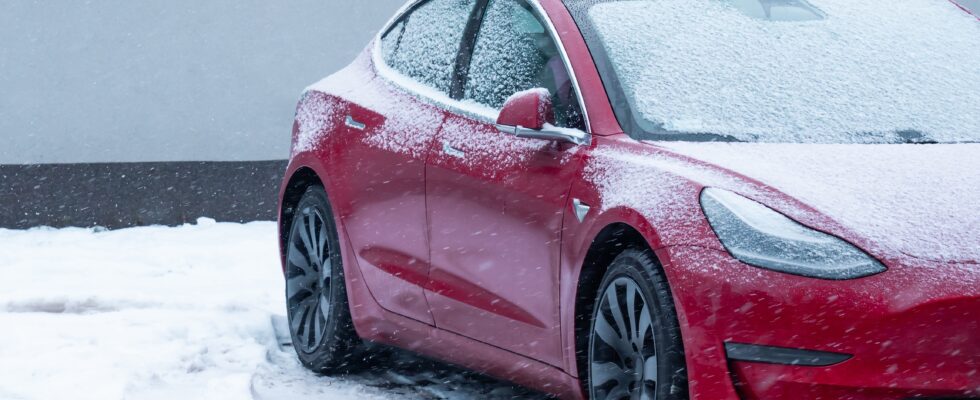The Norwegian Automobile Federation put 23 electric car models to the test to judge their range in cold weather. The Model 3 clearly did not stand out for its good performance.
In Norway, the El Prix is an opportunity for the Norwegian federation to test electric cars sold on the national market: autonomy, charging speed, etc. An event which takes place twice a year and which makes it possible to determine whether the figures put forward by manufacturers under the WLTP standard are close to reality. The Tesla Model 3 Highland was therefore put in a rather delicate position during the test, while all the cars left to drive at the same time in rather icy conditions. Temperatures ranged from -2°C to -10°C.
Tesla Model 3: performance at half mast in the cold
The Model 3 Highland tested was in the Long Autonomy version. Compared to its announced WLTP autonomy, it showed an ugly delta -30%. As a reminder, the latter is given for a range of 629 km, a completely acceptable figure when we see certain competitors. You have to believe that its battery really doesn’t like the cold, since the difference between the real results and the WLTP autonomy is still 188 km. It will therefore have traveled only 441 km during this test.
Performance of other electric models
A car that we didn’t necessarily expect to lend itself properly to this exercise nevertheless succeeded brilliantly: the HiPhi Z, a Chinese premium sedan. Equipped with a large 120 kWh battery, it managed to drive 522 km and was the only one to claim a difference between the announced and actual autonomy falling below 10%. It therefore posted barely 5.9%, a very good score, even more so if we consider the youth of the manufacturer. Generally speaking, Chinese automobiles demonstrated good robustness during the test, remaining for the most part below -20%. The HiPhi was closely followed by the Nio ET5 (481 km) and the Hyundai Ioniq 6 (468 km).
At the bottom of the ranking, without too much surprise, we will find models with a smaller battery (51 kWh): Jeep Avenger, Opel Astra-E and Peugeot e-308, all three belonging to the Stellantis group. Bad point also for the cars of the VAG group, including the ID.7 sedan, which presented a gap of -31.9% compared to its manufacturer autonomy. However, the e-308 distinguished itself by a certain sobriety in its consumption, displaying only 17.0 kWh/100 km.
An interesting winter test, clearly highlighting the extent to which the WLTP standard proves insufficient to estimate the real autonomy of a vehicle. This does not take into account very important factors, such as thermal management of the traction chain, air conditioning or vehicle insulation. Detailed results can be found on the official event page.
Sources: Clean Automotive, The Price

9